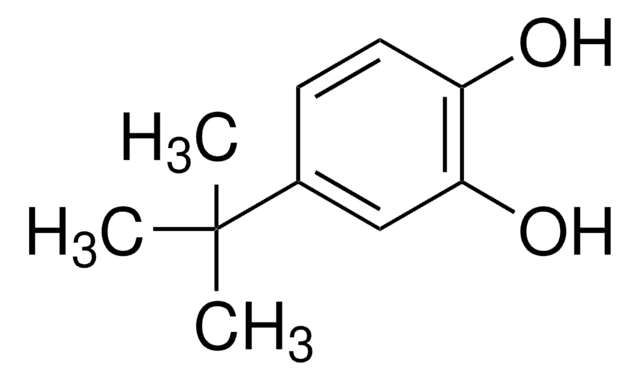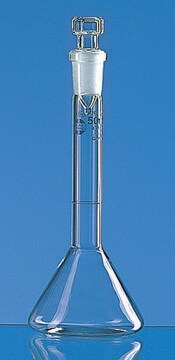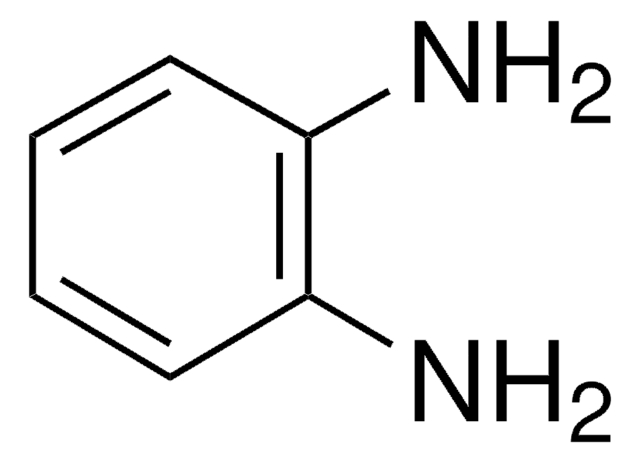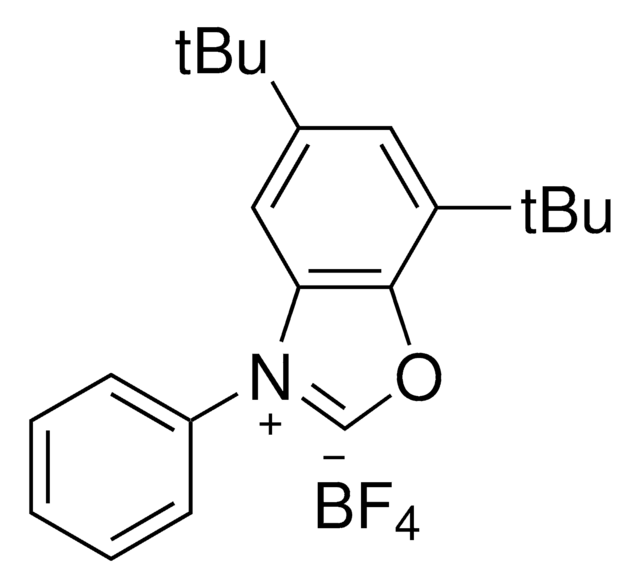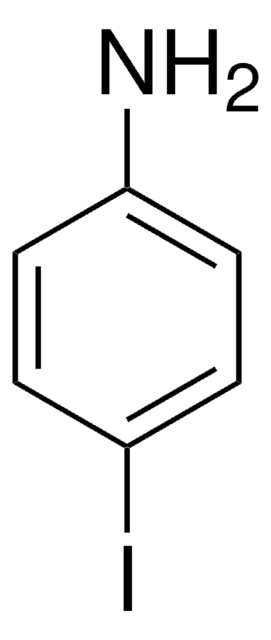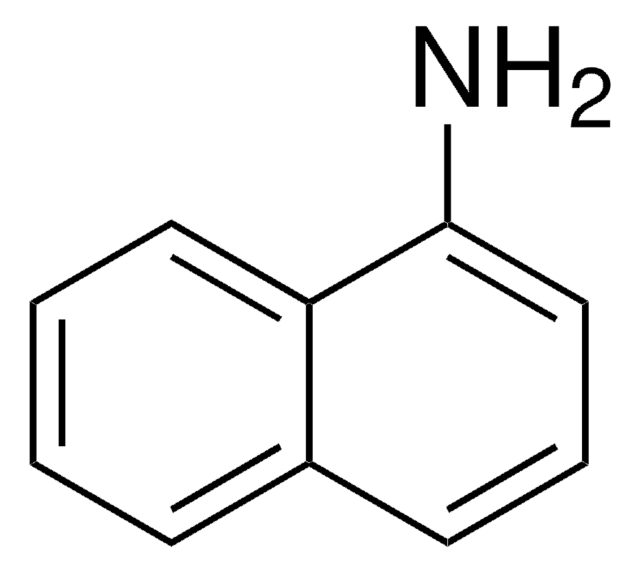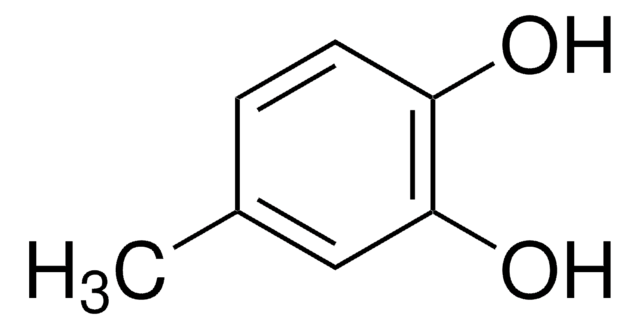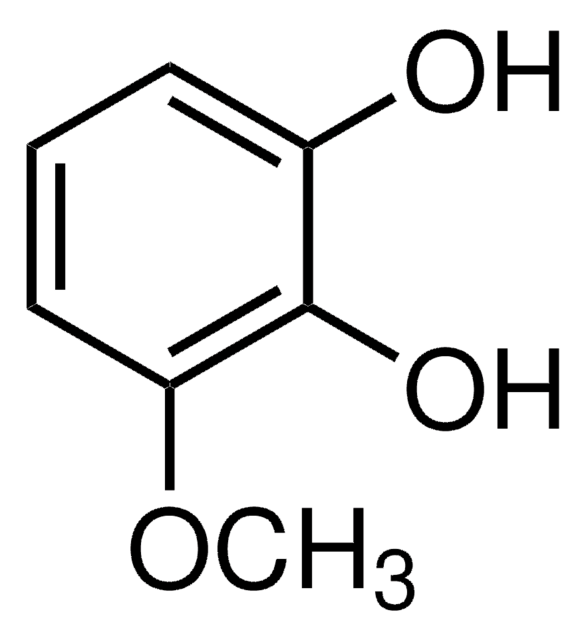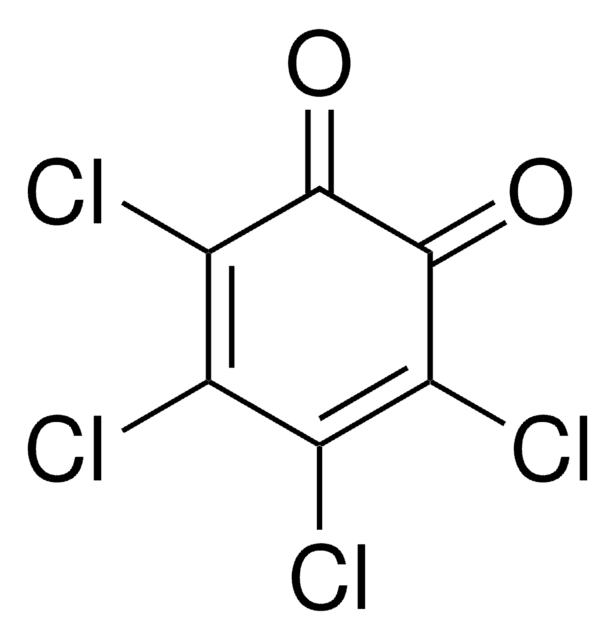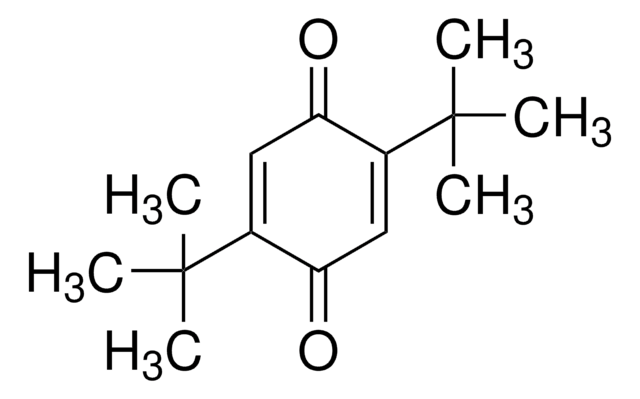Kluczowe dokumenty
D45800
3,5-Di-tert-butylcatechol
98%
Synonim(y):
3,5-Bis(1,1-dimethylethyl)-1,2-benzenediol, 3,5-Di-tert-Butyl-1,2-Hydroxybenzene, 3,5-Di-tert-butyl-1,2-benzenediol, 3,5-Di-tert-butyl-1,2-dihydroxybenzene, 3,5-Di-tert-butyl-o-hydroquinone, 3,5-Di-tert-butylpyrocatechol, 3,5-Ditert-butylbenzene-1,2-diol, 4,6-Di-tert-butyl-1,2-benzenediol, 4,6-Di-tert-butylpyrocatechol
About This Item
Polecane produkty
Poziom jakości
Próba
98%
Postać
crystals
mp
95-100 °C (lit.)
ciąg SMILES
CC(C)(C)c1cc(O)c(O)c(c1)C(C)(C)C
InChI
1S/C14H22O2/c1-13(2,3)9-7-10(14(4,5)6)12(16)11(15)8-9/h7-8,15-16H,1-6H3
Klucz InChI
PJZLSMMERMMQBJ-UHFFFAOYSA-N
Szukasz podobnych produktów? Odwiedź Przewodnik dotyczący porównywania produktów
Powiązane kategorie
Zastosowanie
- A reactant to prepare 3,5-di-tert-butylquinone via catalytic oxidation.
- A polymerization inhibitor in the production of monomers such as styrene and butadiene.
- An additive in the synthesis of enantioselective 1,2-oxazinanes, and isoxazolidines via asymmetric nitroso aldol reaction using L-proline as a catalyst.
Hasło ostrzegawcze
Warning
Zwroty wskazujące rodzaj zagrożenia
Zwroty wskazujące środki ostrożności
Klasyfikacja zagrożeń
Eye Irrit. 2 - Skin Irrit. 2 - STOT SE 3
Organy docelowe
Respiratory system
Kod klasy składowania
11 - Combustible Solids
Klasa zagrożenia wodnego (WGK)
WGK 3
Temperatura zapłonu (°F)
Not applicable
Temperatura zapłonu (°C)
Not applicable
Środki ochrony indywidualnej
dust mask type N95 (US), Eyeshields, Gloves
Wybierz jedną z najnowszych wersji:
Masz już ten produkt?
Dokumenty związane z niedawno zakupionymi produktami zostały zamieszczone w Bibliotece dokumentów.
Klienci oglądali również te produkty
Nasz zespół naukowców ma doświadczenie we wszystkich obszarach badań, w tym w naukach przyrodniczych, materiałoznawstwie, syntezie chemicznej, chromatografii, analityce i wielu innych dziedzinach.
Skontaktuj się z zespołem ds. pomocy technicznej
